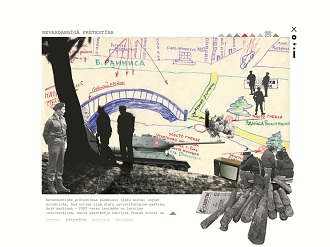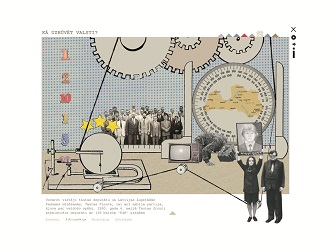
Dd Studio was established exactly 10 years ago. Our first project was an exhibition for the Ventspils Museum which won several awards for the excellence of the project and the innovative approach that was taken in exhibiting the museum's collection. Now, 10 years on, we are still working on new projects which receive international prizes. In Turin on February 14, 2009, for instance, Dd Studio received the FIAMP Grand Prix in the CD/DVD category for its multi-media programme "The Latvian People's Front: Living History."
Dd Studio is a digital design enterprise which makes use of innovative ideas, different types of media and the latest technologies to pursue a variety of projects. Dd Studio projects bring together attractive multimedia design and outstanding functionality. We design Internet pages, interactive presentations, multimedia discs, video presentations and exhibitions, and we integrate all of these various products as needed.
We believe that each project is individual and different from the others, and so each one requires an individualised approach. We first look at the client's goals, and then we put together the creative team that will best be able to achieve those goals. Each project has three phases: Research, design, implementation.
In 2008, Latvia celebrated the 90th anniversary of its declaration of independence, as well as the 20th anniversary of the establishment of the Latvian People's Front (LTF) - the umbrella organisation for the struggle to gain independence from the USSR. Several events were organised in honour of these celebrations, and there were projects aimed at reflecting the historical events. Books had been written about the LTF, and television programmes had been produced about it. Our job was to find a way of delivering that information to schoolchildren and young people. We decided that an interactive multimedia product would be the best way of achieving the goal of telling people about the LTF, its origins, its achievements, the way in which it did its work, and the people who were involved. We correlated historical materials, identified the structure for the programme, collected historical evidence and audiovisual materials, and then designed the product in a way that would be acceptable to young people.
A special committee supported our proposal on producing an interactive programme about the history of the Latvian People's Front. The project was important for the country and its people. We felt that it was important to demonstrate the achievements of the organisation to young people so that they might never forget what was accomplished.
Whenever we launch a new project, we always think about our target audience, the goals of the project, and the resources that we can bring to the table in pursuit of those goals. We always identify a "story" for the project - one that will attract and excite the user, leading him or her to look at one chapter of the story after another to find out how it ends. Without even noticing, users view a great deal of content and visual materials.

Our experience is that the volume of data has nothing automatic to do with the use of the data. The more you offer, the less the viewer will be interested in looking at all of it. That's why we decided to take a different approach to our multimedia disc - the "story" that involved a cinema-type screenplay, ensuring that users wanted to use the disc and study its contents.
Projects of this type involve a production team of relevant specialists - project managers, content editors, eyewitnesses to events, experts, historians, artists, designers, software designers, photographers, videographers, journalists and translators. Managing such a team is always a challenge, all the more given the fact that there are always time and financial limitations that must be handled without sacrificing project quality. We managed to do this because the project was important for all of us, not just as professionals, but also as residents and patriots of Latvia.
We could achieve a high level of professionalism in our project because we had a decade of experience with such undertakings. We had experience in organising teams of specialists in order to achieve the level of quality that we required. We knew what our target audience of young people would find interesting and involving, and that is exactly what we offered.
Our experience shows that when we think about multimedia work for a museum or exhibition, the first thing is to define the goal, the content and the target audience of the project. That makes it possible to identify the best technological and visual solutions - ones that are usually complex in that they involve historical objects, photographs, print information, and interactive solutions. This linkage is the most effective one, because it makes it possible for us to make maximum use of the advantages of each of these various elements.